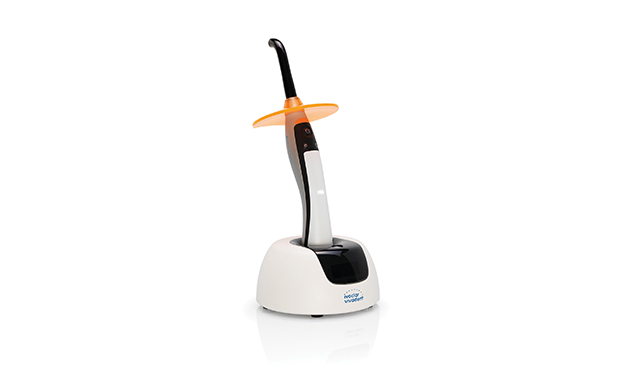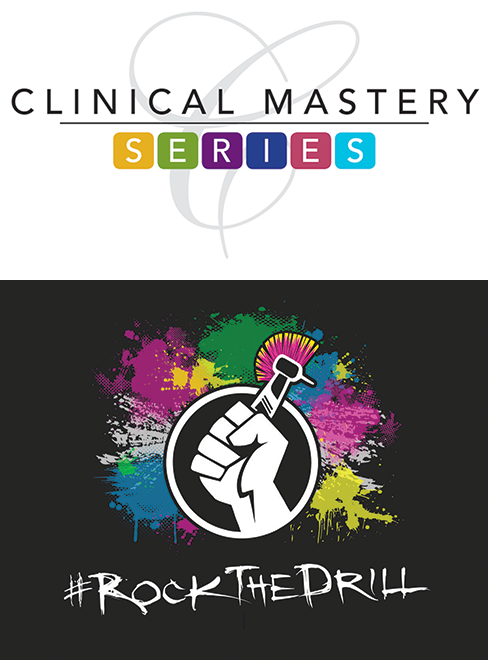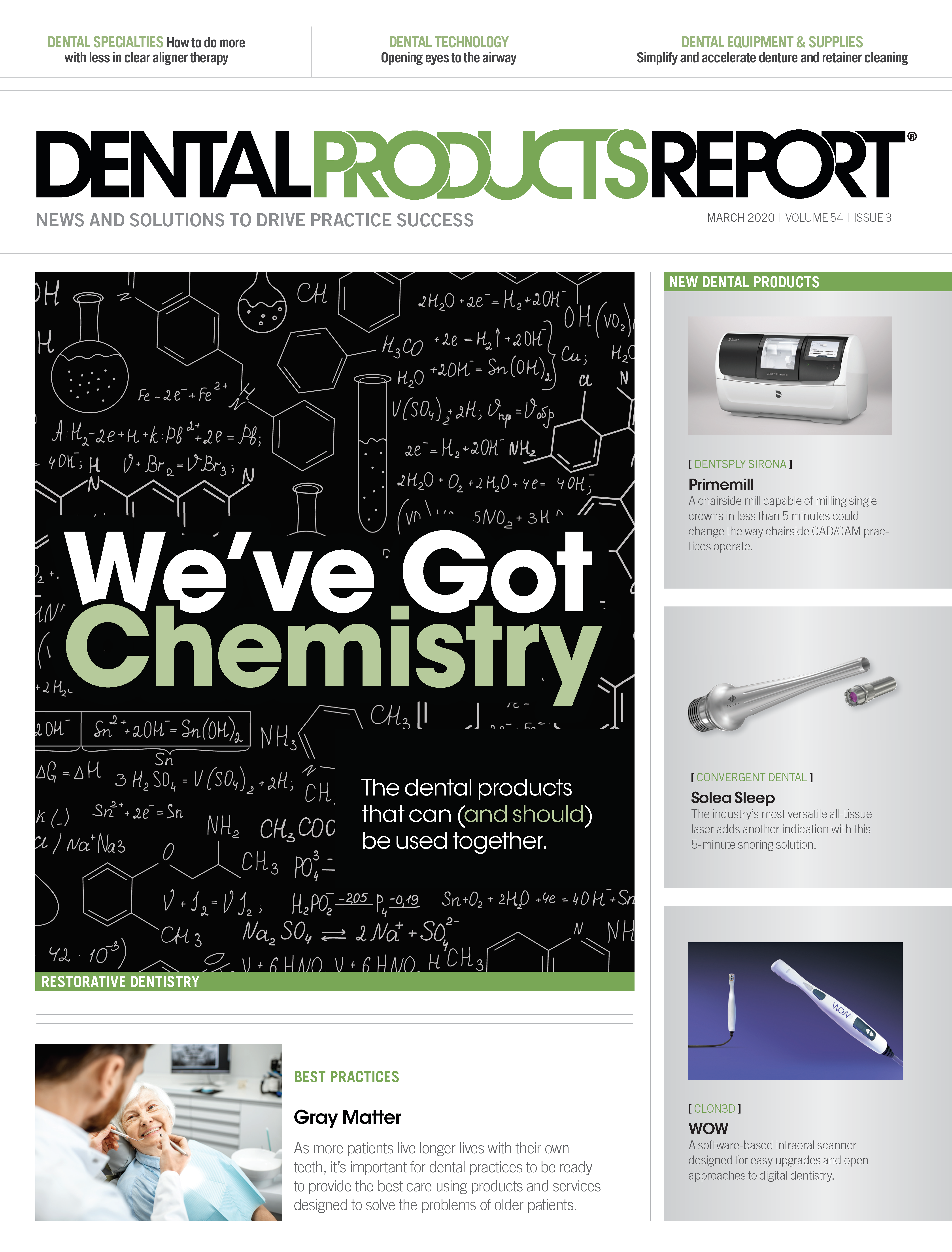Presented by the faculty of the Clinical Mastery Series, the New Generation of Dental Education. Join the movement.
Power Up Your Posterior Composites
With the current technology available, dentists have to demand more from restorations.

Bulk fill composites were introduced into dentistry more than a decade ago, and yet they still only account for 16.9 percent of composite revenues annually. There are approximately 180 composites on the market, 26 of which are classified as bulk fill.
Currently more than 167 million resin-based restorations are placed annually in the U.S., with an average longevity of only six years.1-3 Our most common procedures performed day-in and day-out are posterior composites. With the current technological advances in dental materials and light polymerization, we have to demand more from ourselves and our restorations.
The advantages of composites are that they are esthetic, more conservative, do not require mechanical retention, and bonded restorations can reinforce existing tooth structure.
The disadvantages are that they are more complicated to perform due to multiple steps, potential post-op sensitivity if proper techniques are not followed, achieving anatomical contours can be difficult, they are more costly, and typically the procedure requires more time, which can mean that it can become unprofitable for many offices dealing with insurance reimbursements.
If we are going to improve our success of posterior composites, we must first understand what accounts for such a low longevity rate that has been indicated in composite failures. Micro-leakage, lack of moisture control, polymerization shrinkage, bonding technique, voids, size of the restoration, degradation, secondary caries, and improper depth of cure have all been indicated as sources of increased failure.4,5
Understanding these mechanisms of failure have helped us to create better techniques, using a streamlined process with materials that are more idealized to use in our posterior restorations. In simple terms we must:
- Prevent contamination during the restorative process
- Simplify and minimize clinical steps to prevent the introduction of error
- Speed the process to help prevent moisture contamination
- Verify proper cure of the bonding agent and composite
As efficient as standard bulk-fill composites can be to assist in this process, the 3s PowerCure System from Ivoclar Vivadent requires only a 3 second cure for each step: Adhese Universal bonding agent, Tetric PowerFlow, and Tetric PowerFill. This is accomplished with the use of Ivoclar Vivadent’s Bluephase PowerCure light, capable of providing 3,000 mW/cm2 of light to the cavity preparation. Likewise, Adhese Universal bonding agent, Tetric PowerFlow flowable composite, and Tetric PowerFill bulk fill composite are specifically designed to cure in this reduced time frame while having reduced polymerization shrinkage and reduced polymerization stress over traditional composites.
Just how much strength does your current light have? It is highly recommended that you routinely test your light to ensure it is delivering the energy required to polymerize the materials you are using. Improper polymerization alone is one of the culprits of early composite failures.6-16
The following case demonstrates how efficiently posterior composites can be placed. Bulk fill composites are indicated for use in the posterior dentition and help to not only speed the process, but also help eliminate steps, thus helping to eliminate the introduction of error into the process.
Case Presentation
A quadrant of failing amalgams have been selected for replacement (Figure 1). One of the first options to reduce the possibility of moisture contamination is the use of an OptraDam from Ivoclar Vivadent (Figure 2). This is a self-retracted, non-latex rubber dam that can be used without the need of rubber dam frame or clamps.
Once the failing restorations and decay are completely removed the restorative process begins using the 3s PowerCure System.
Sectional matrices are first placed with Triodent V3 rings and wedges from Ultradent Products. Selective etching protocol is followed, using 35 percent phosphoric acid for 15 seconds on the enamel only (Figure 3), after which the preparations were thoroughly rinsed. Adhese Universal was applied to the selectively etched enamel and scrubbed into the non-etched dentin for 20 seconds (Figure 4), then air thinned with an air-only syringe, and cured with the PowerCure light for 3 seconds.
Unlike the traditional flowable materials that must be placed as a thin increment to minimize shrinkage stresses and ensure complete curing, Tetric PowerFlow was used for the first increment. It can be placed in increments up to 4 mm without concerns about shrinkage stresses or incomplete curing, and its self-adapting technology contributes to void-free restorations in the deepest boxes.
Esthetically, dark underlying tooth structure is blocked by the similar dentin-like opacity that’s achieved after the 3-second cure per tooth with the PowerCure light. A single, final layer of Tetric PowerFill is placed, condensed, and initial anatomical form placed using hand instrumentation and cured for 3 seconds per tooth with the PowerCure light.
After the bands were removed, the restorations were cured for an additional 3 seconds from the proximal surfaces to ensure complete curing. As important as the amount of energy delivered from the light is the position of the light in relation to the material. Having the light not directly over the tooth will result in inadequate polymerization of the material (Figure 5), as well as having the light too far away from the tooth (Figure 6) will result in inadequate polymerization.
To finish the case, the occlusion is harmonized, and the restorations are polished with Astropol polishing cups and white carbide polishing burs from Brasseler USA (Figure 7).
How can you increase the success rate of your posterior composites and simultaneously increase the profitability of these procedures? Use materials that are specifically designed for this category of dentistry. Bulk fill composites allow for reduced layers, minimizing the chances of voids, reduced steps due to increased depth of cure, reduced polymerization shrinkage, reduced polymerization stress, reduced cusp strain, and increased fracture resistance.17

These benefits can ensure prevention of early composite failures, as well as increase one’s profitability with a streamlined system. In addition, the Ivoclar Vivadent 3s PowerCure System allows one to further increase the ease of placement with only a 3 second cure per step, allowing the dentist to perform predictable, esthetic posterior composites with a single system (Figures 8-9).
References
- American Dental Assoc. “2005-06 Survey of Dental Services Rendered.” (2007).
- Heintze SD, Rousson V. “Clinical Effectiveness of Direct Class II Restorations a Meta-Analysis.” Journal of Adhesive Dentistry vol. 14,5 (2012): 407-431.
- Kopperud SE, Tveit AB, Gaarden T, Sandvik L, Espelid I. “Longevity of Posterior Dental Restorations and Reasons for Failure.” European Journal of Oral Sciences vol. 120,6 (2012): 539-548.
- Sammer J, Hege V, Aher G, Fajandar N. “Influence of Light Curing Units on Failure of Direct Composite Restorations.” Journal of Conservative Dentistry vol. 14,3 (2011): 225-227.
- Price RB, Shortall AC, Palin WM. “Contemporary Issues of Light Curing.” Operative Dentistry vol 39,1 (2014): 4-14.
- Price RB. “Light Energy Matters.” Canadian Dental Assoc. (2010); 76:a63.
- Price RB, Derand T, Sedarous M, Andreou P, Loney RW. “Effect of Distance on the Power Density from Two Light Guides.” Journal of Esthetic Dentistry vol. 12 (2000): 320-27.
- Price RBT, Felix CA. “Effect of Delivering Light in Specific Narrow Bandwidths from 394 to 515 nm on the Micro-hardness of Resin Composites.” Dental Materials vol. 25,7 (2009): 899-908.
- Seth S, Lee CJ, Ayer CD. “Effect of Instruction on Dental Students’ Ability to Light Cure a Simulated Restoration.” Journal of Canadian Dentistry (2012);78:c123.
- Rueggeberg FA, Giannini M, Arrais CAG, Price RBT. “Light Curing in Dentistry and Clinical Implications: A Literature Review.” Brazilian Oral Research vol. 31, 1 (2017).
- Issa Y, Watts DC, Boyd D, Price RB. “Effect of Curing Light Emission Spectrum on the Nano-hardness and Elastic Modulus of Two Bulk-fill Composites.” Dental Materials vol. 32,4 (2016): 535-50.
- Soares CJ, Rodrigues MP, Olivera LRS, et al. “An Evaluation of the Light Output from 22 Contemporary Light Curing Units.” Brazilian Journal of Dentistry vol. 28,3 (2017).
- Segal P, Lugassy D, Mijiritsky E, et al. “The Effect of the Light Intensity and Light Distances of LED and QTH Curing Devices on the Hardness of Two Light-cured Nano-resin Composites.” Materials Sciences and Applications vol. 6,11 (2015).
- Price RB, Felix CM, Whalen CM. “Factors Affecting the Energy Delivered to Simulated Class I and Class V Preparations.” Journal of the Canadian Dental Assoc. (2010); 76:a94.
- Ruggeberg FA, Ergle JW, Mettenburg DJ. “Polymerization Depths of Contemporary Light-curing Units Using Micro-hardness.” Journal of Esthetic and Restorative Dentistry (2007).
- Sampaio CS, Atria PJ, Rueggeberg FA, et al. “Effect of Blue and Violet Light on Polymerization Shrinkage Vectors of a CQ/TPO-containing Composites.” Dental Materials vol. 33,7 (2017).
- Rosatto CM, Bicalhoa AA, Veríssimoa C, et al. “Mechanical Properties, Shrinkage Stress, Cuspal Strain and Fracture Resistance of Molars Restored with Bulk-fill Composites and Incremental Filling Technique.” Journal of Dentistry vol. 43,12 (2015): 1519-1528. Accessed via web < https://www.sciencedirect.com/journal/journal-of-dentistry/vol/43/issue/12>.
